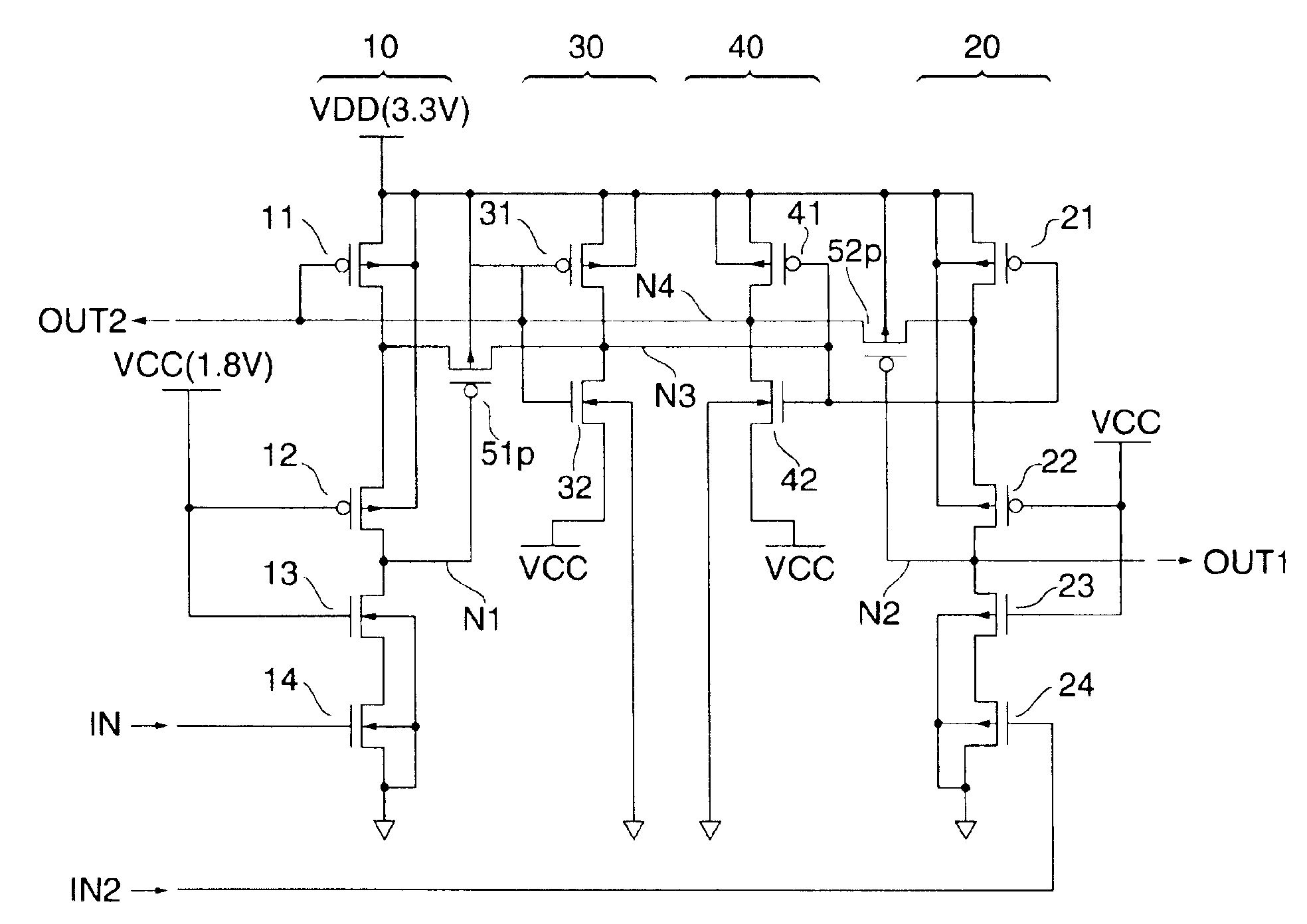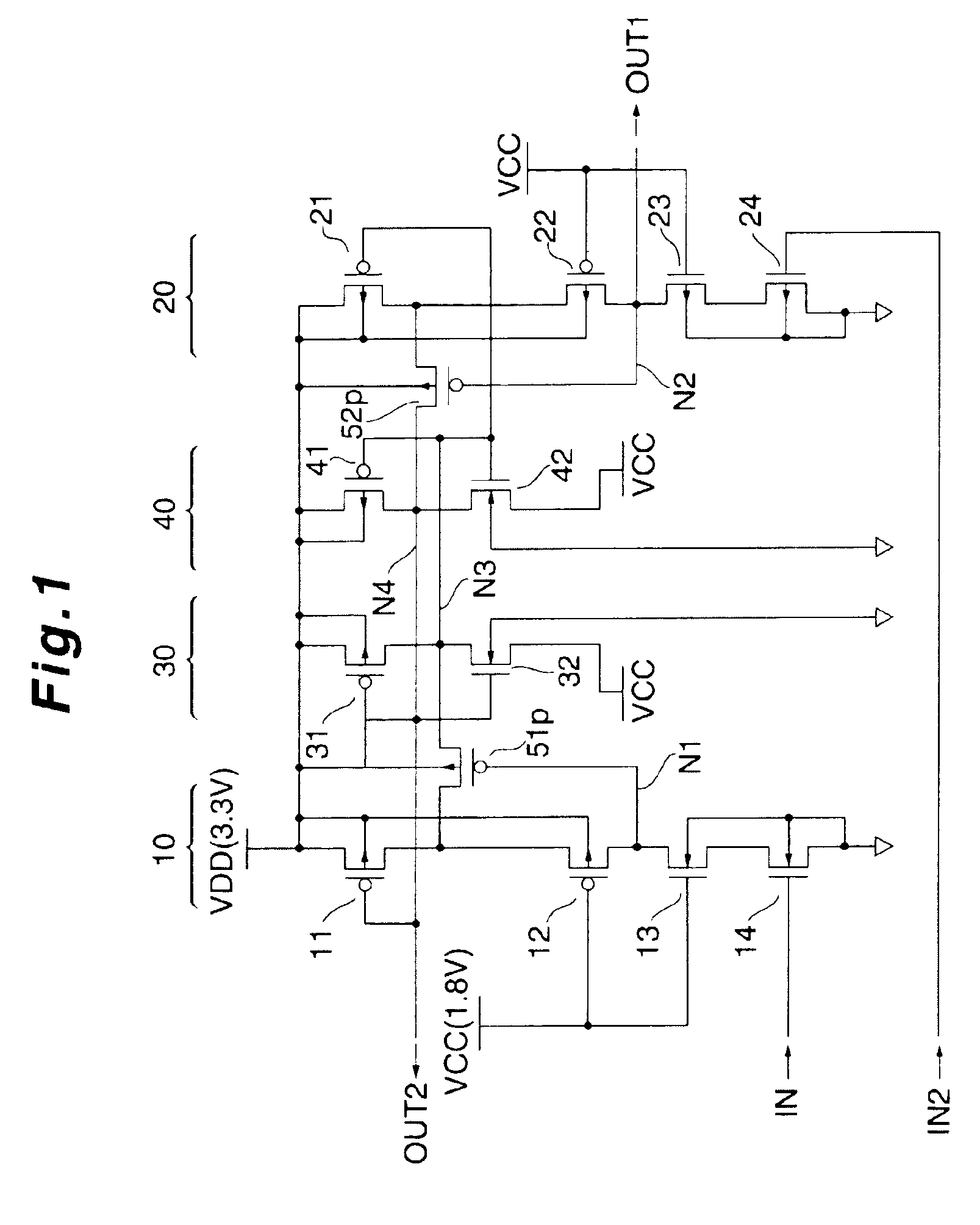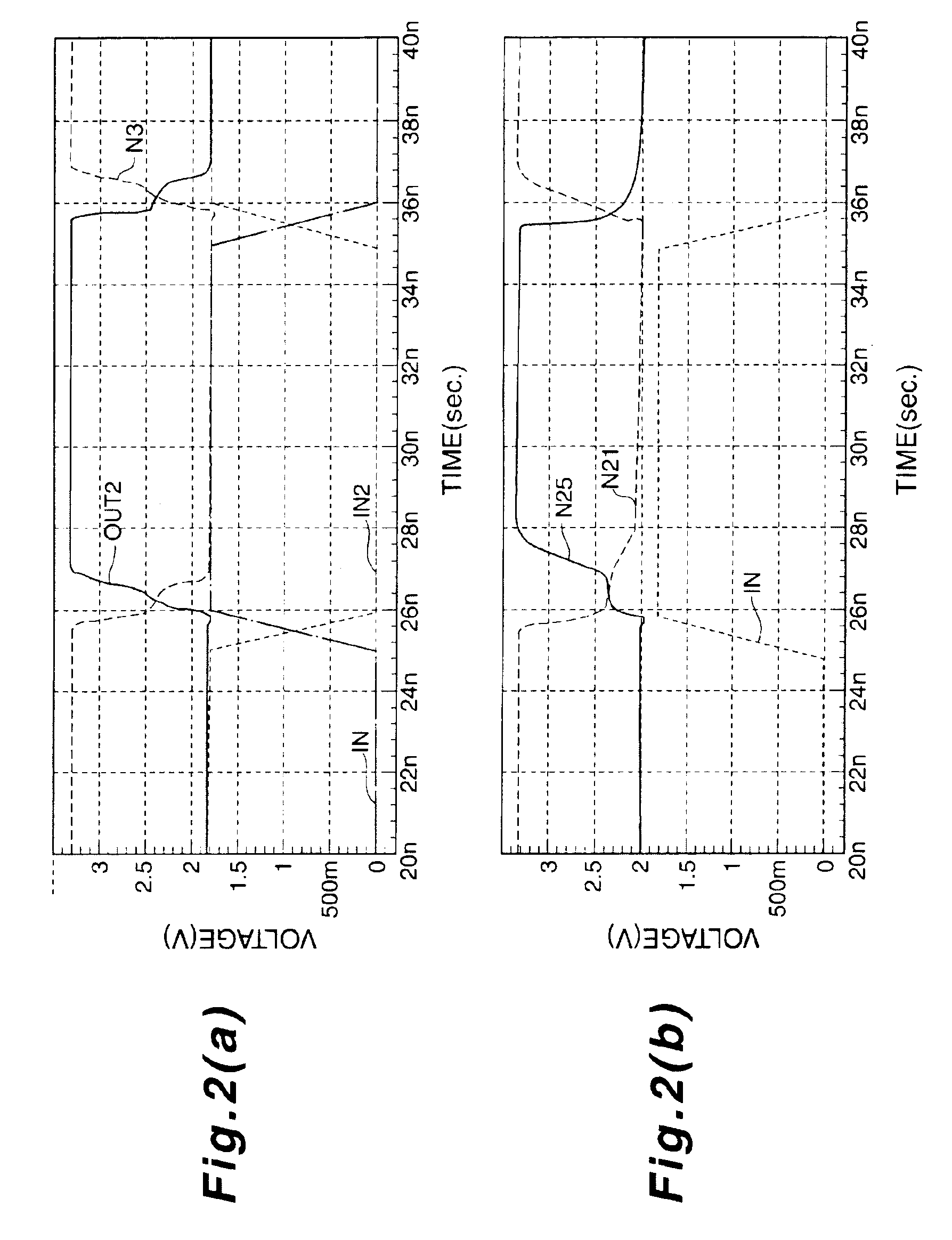Level transforming circuit
a level-transforming circuit and level-transforming technology, applied in logic circuit coupling/interface arrangement, pulse generator, pulse technique, etc., can solve the problems of complex manufacturing process, not operating rapidly, and level-transforming circuit of the conventional art. achieve fast output circuit, pass current, and operation can be fast
- Summary
- Abstract
- Description
- Claims
- Application Information
AI Technical Summary
Benefits of technology
Problems solved by technology
Method used
Image
Examples
embodiment 1
Effect of Embodiment 1
[0108]As mentioned above, according to Embodiment 1, the gate oxide film of each transistor mentioned above is not impressed with an electric potential exceeding the low voltage level statically. Therefore, a level transforming circuit can comprise a MOS transistor where an acceptable dielectric strength of the gate insulating film is lower than the high voltage level. The latch circuit comprises a CMOS inverter. Thus, the voltage between the gate and the source impressed with each transistor of the CMOS inverter transiently becomes lower than the low voltage level. Thus, the level transforming circuit of present invention operates faster than the second conventional art (FIG. 11), and a drop of load bearing ability can be restrained.
[0109]Moreover, according to Embodiment 1, the level transforming circuit comprises the intermediate circuit consisting of the MOS transistor and the CMOS inverter. Thus, the voltage between the gate and the source impressed with e...
embodiment 2
Effect of Embodiment 2
[0118]As described above, according to Embodiment 2, voltage exceeding the strength between the source and the drain is never impressed between the source and the drain of each transistor mentioned above, even in a transient state. Therefore, the level transforming circuit can comprise only a MOS transistor whose source-drain strength is lower than the high voltage electricity source. Moreover, a voltage exceeding the low voltage level is never impressed with the gate oxide film of each transistor mentioned above, even in transient state. Therefore, a reliable level transforming circuit can comprise only the MOS transistor whose strength of gate oxide film is lower than the high voltage electricity source level.
Embodiment 3
[0119]FIG. 3 shows a level transforming circuit according to Embodiment 3. In FIG. 3, elements that are the same as Embodiment 1 are designated with the same symbols.
[0120]Embodiment 3 is different from Embodiment 1 or 2 in the following poin...
embodiment 3
Effect of Embodiment 3
[0122]In Embodiment 3, NMOS 32 and 42 are formed in a P well region electrically separated from the semiconductor substrate, and PMOS 51p and 52p are separated from the N well of other PMOS. Substrates of NMOS 32, 42 and PMOS 51p, 52p are connected with their own sources respectively. Therefore, an effect is obtained of further relieving load to the gate oxide film of NMOS 32, 42 and PMOS 51p, 52p. Moreover, inverse bias voltage impressed with the pn junction is relieved, which is formed by the drain and the substrate of NMOS 32 and 42. Moreover, faster operation of the circuit is expected because influence of substrate bias on the operation of circuit does not exist about NMOS 32 and 42.
[0123]An element isolation technique such as triple well structure applied to Embodiment 3 has been adopted for LSI made by a fine process for the purpose of reducing substrate noise or reducing leak current, and the cost of production increases by several percent. But, this te...
PUM
 Login to View More
Login to View More Abstract
Description
Claims
Application Information
 Login to View More
Login to View More - R&D
- Intellectual Property
- Life Sciences
- Materials
- Tech Scout
- Unparalleled Data Quality
- Higher Quality Content
- 60% Fewer Hallucinations
Browse by: Latest US Patents, China's latest patents, Technical Efficacy Thesaurus, Application Domain, Technology Topic, Popular Technical Reports.
© 2025 PatSnap. All rights reserved.Legal|Privacy policy|Modern Slavery Act Transparency Statement|Sitemap|About US| Contact US: help@patsnap.com



